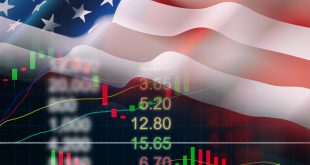Gold prices are mounting a strong recovery, climbing back above $3,345 during Wednesday’s U.S. trading session after hitting a three-week low of $3,311 earlier in Asian markets. This rebound is fueled by a retreating U.S. Dollar and declining Treasury yields, even as investors adopt a wait-and-see approach ahead of the Federal Reserve’s July meeting minutes. The precious metal’s steadiness below the $3,350 mark reflects a mix of easing safe-haven demand amid improved geopolitical sentiment and lingering uncertainties that continue to underpin its value.
A key driver of the upbeat market mood stems from a high-profile White House gathering involving U.S. President Donald Trump, Ukrainian President Volodymyr Zelenskyy, and senior European Union officials.
This summit has sparked optimism for diplomatic progress in the ongoing Russia-Ukraine war, with Trump teasing the possibility of a trilateral meeting that could include Russian President Vladimir Putin. Such developments have tempered immediate risk aversion, allowing gold to pause its recent slide from Tuesday’s losses.
However, the path forward remains uncertain, as Russian Foreign Minister Sergey Lavrov emphasized that any high-level talks must build gradually from expert-level discussions through established diplomatic routes, with no firm timeline in place. Despite this caution, the renewed dialogue has broadly lifted investor confidence, though persistent tensions ensure gold retains some appeal as a protective asset.
Compounding the market’s watchful stance are the upcoming FOMC July minutes, set for release later today, which could expose rifts within the Federal Reserve. This session marked a rare event—the first since 1993 with two dissenting votes from Board of Governors members Christopher Waller and Michelle Bowman, who pushed for a 25-basis-point rate cut rather than maintaining the status quo. Insights into these divisions might signal evolving attitudes toward monetary easing, potentially swaying gold’s trajectory in the short term. For now, the metal trades in a tight band, facing technical hurdles around $3,350 that cap gains.
Broader market dynamics are also at play, with the U.S. Dollar Index (DXY) retreating from a one-week peak of 98.44 to around 98.12. This pullback follows President Trump’s demand for Fed Governor Lisa Cook’s resignation amid a mortgage scandal, heightening political tensions around the central bank. U.S. Treasury yields have dipped for a second consecutive day, with the 10-year benchmark falling to 4.296% and the 30-year near 4.891%. Real yields, as gauged by the 10-year TIPS, dropped 5 basis points to 1.939% from an intraday high, reducing the cost of holding non-interest-bearing gold and providing a subtle boost.
On the trade horizon, the U.S. has broadened its 50% tariffs on steel and aluminum to encompass 407 more product lines, such as auto parts, chemicals, plastics, and furniture, effective from Monday. Commerce Department’s Under Secretary for Industry and Security Jeffrey Kessler described the move as a step to plug loopholes and bolster domestic industries.
Meanwhile, U.S. Treasury Secretary Scott Bessent highlighted productive discussions with China during a 90-day tariff truce, noting China’s significant role in tariff revenues and hinting at further talks before November. He suggested the current setup is functioning adequately but stressed that trade relations with Beijing are still evolving, keeping markets on edge for updates.
Trump’s comments during the summit added layers to the narrative, offering U.S. assistance in security—particularly air support—while firmly ruling out ground troops in Ukraine. He urged Putin to act constructively, warning of consequences otherwise, and called on Zelenskyy to demonstrate flexibility for a viable agreement.
Additionally, Trump escalated his criticism of Fed Chair Jerome Powell, blaming high interest rates for stifling the housing sector and demanding swift cuts. These remarks arrive just ahead of Powell’s address at the Jackson Hole Symposium on Friday, where traders will scrutinize for hints on future policy amid mounting external pressures.

 Noor Trends News, Technical Analysis, Educational Tools and Recommendations
Noor Trends News, Technical Analysis, Educational Tools and Recommendations




